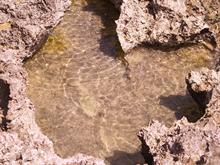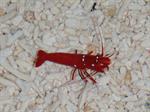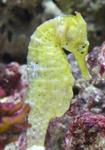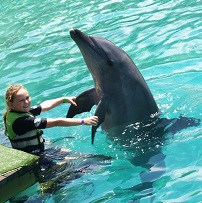 Continue your marine studies with this follow-on course to Marine Studies I.
Continue your marine studies with this follow-on course to Marine Studies I.
- Learn to identify a wider range of marine organisms
- Learn about the physiology and anatomy of marine animals
- Work in ecotourism or marine industries, start a business or increase your employability
- Self paced, 100-hour course.
COURSE STRUCTURE AND CONTENT
This course has 10 lessons:
1. Introduction and Simple Organisms
- Terminology
- Classification or taxonomy
- Simple and microscopic organisms
- Types of protozoans
- Ciliates
- Flagellates
- Algae
- Bacteria
- Plankton
- Sponges
2. Marine Plants
- Terminology
- Overview of seaweeds
- Chlorophyta (Green Algae)
- Phaeophyta (Brown Algae)
- Rhodophyta (Red algae)
- Marine fungi
- Marine flowering plants: sea grasses, mangroves, salt marsh plants
3. Cnidarians & Worms
- Terminology
- Anemones
- Jellyfish
- Crustaceans
- Worms: flatworms, ribbon worms, round worms
- Segmented worms. peanut worms, giant tube worms
4. Arthropods
- Introduction
- Characteristics
- Prawns and shrimps
- Deep water prawns in the Atlantic
- The common prawn (Palaemon serratus)
- Giant red shrimp
- Pink prawn
- Shallow water prawns
- Indian white prawn
- Tiger prawn
- Kuruma shrimp
- Green tiger prawn
- Peneaeus notialis and others

- Barnacles
- Crabs
- True crabs
- Hermit crabs
5. Molluscs
- Introduction and classification
- Characteristics
- Gastropods
- Whelk
- Bivalves
- Mussels and oysters
- Cocles
- Green lipped mussels, common mussel, mediterranean mussel, and others
- Pacific oyster, European flat oyster, Olympia oyster
- Nudibranchs (open gilled sea slugs)
- Cephalapods
- Octopuses
- Biology of the octopus
- Cuttlefish
- Squid: classification and biology
- Oegopsida squid and other squid
- Chitons
6. Echinoderms
- Terminology
- Characteristics of Echinoderms
- Starfish
- Sea Urchins
- Sea Cucumbers
-
7. Non-Bony Fishes
- Lampreys
- Hagfishes
- Sharks
- Rays
 8. Bony Fishes I
8. Bony Fishes I
- Introduction
- Terminology
- Structure and biological characteristics
- Classification
9. Bony Fishes II
- Families within Oesteichyes
- Mesopelagic fish: distribution, life history and ecology
- Clupeids (e.g., sardine, herring)
- Tunas: types, life history, feeding, predators
- Mackerels
- Bill Fish (Marlins, spear fish, sail fish)
10. Marine Mammals and Higher Animals
- Marine reptiles: sea snakes, sea turtles, crocodilians
- Pinnipeds (seals walruses, Seal lions
- Dugongs and Manatees
- Whales and Dolphins
- Sea birds
Each lesson culminates in an assignment which is submitted to the school, marked by the school's tutors and returned to you with any relevant suggestions, comments, and if necessary, extra reading.
COURSE AIMS
- Describe the variety and nature of microscopic animals which occur in marine environments.
- Describe the variety and nature of a range of different types of marine plants.
- Describe the variety and nature of a range of different types of cnidarians and marine worms.
- Describe the variety and nature of arthropods in marine environments.
- Describe the variety and nature of Molluscs in marine environments.
- Differentiate between different classes of Echinoderms and selected families within those classes.
- Describe the shared characteristics and distinguishing features of a selection of different species of non-bony fish.
- Describe characteristics of bony fish, including anatomy, physiology and behaviour.
- Differentiate between different families of bony fish.
- Describe the taxonomic characteristics of groups of marine animals including reptiles, birds and mammals.

DOLPHINS, PORPOISES, TOOTHED WHALES
Dolphins and porpoises are actually types of toothed whales (Suborder Odontoceti).
In contrast to baleen whales, toothed whales have to actively pursue and catch their prey. To compensate for this need for a greater degree of agility and speed, their body size is normally much smaller than that of their baleen relatives. A majority of the toothed whales are relatively small such as the river dolphins and porpoises (more detail shown below).
They have teeth so that they can hold their prey of fish and squid. Unlike other mammals that have two sets of teeth during their lifetime, toothed whales only possess one set of teeth throughout their life. They also possess only one blowhole, unlike baleen whales that have two. As they do not possess vocal cords, all sounds are produced within the blowhole.
Another feature that distinguishes toothed whales from baleen whales is the use of a special system of sound seeing called echolocation. Given that visibility in the water column can be limited due to such factors as absorption or turbidity, they use echolocation to orient themselves in their environment and also to find their prey.
Sperm Whale (Physeter macrocephalus)
The sperm whale is one of the more well known toothed whales. This whale possesses the largest whale of any animal. The name “sperm whale” is termed for the milky-white substance that is found in the animal’s head. Mature males can grow to over 20 metres in length and in large males the head can account for 1/3 of the whale’s length. The sperm whale can inhabit a range of cold water and tropical oceans and seas.
Dolphins (Family Delphinidae)

There are just under 40 species of dolphin worldwide. They can vary greatly in size from 1.2 m (40 kg) in the Maui’s dolphin to 9.5 m (10 tonnes) in the Orca. Dolphins are social animals, living in pods of up to 12 animals. Dolphins have adopted a range of feeding behaviours, however most feed on fish and squid. All use echolocation to find prey. The orca being the exception, feeding on other marine mammals. Some representatives of the dolphin family include:
- Bottlenose Dolphin (Genus Tursiops)
- Common Dolphin (Genus Delphinus)
- Atlantic Spotted Dolphin (Stenella frontalis)
- Killer Whale or Orca (Orincus orca)
- Amazon River Dolphin (Inia geoffrensis)
Porpoises (Family Delphinidae; Subfamily Phocoenidea)
These animals are similar to dolphins, though they differ physically by having shorter beaks and spade-shaped teeth. They live in all oceans, but stay closer to shore. They use echolocation to hunt, like the dolphins and prey on crustaceans, squid and fish. Examples include:
- Finless Porpoise (Neophocaena phocaeniodes)
- Harbour Porpoise (Phocoena phocoena)
- Spectacled Porpoise (Phocoena dioptrica)
- Dall’s Porpoise (Phocoenoides dalli)
Why Study with ACS?
Design your own learning pathway.
Study at your own pace, from anywhere, at any time.
Receive prompt, expert support from our team of committed and friendly tutors.
Your learning is our priority. We are flexible and adaptable to meet your educational needs!
Enrolling is easy - just go to the top of this page and select your study method and payment option.
If you have any questions about studying with ACS, or want to know more about any of our courses, get in touch with our specialist tutors today. They will be happy to answer your questions and look at different study options to fit in with your goals.